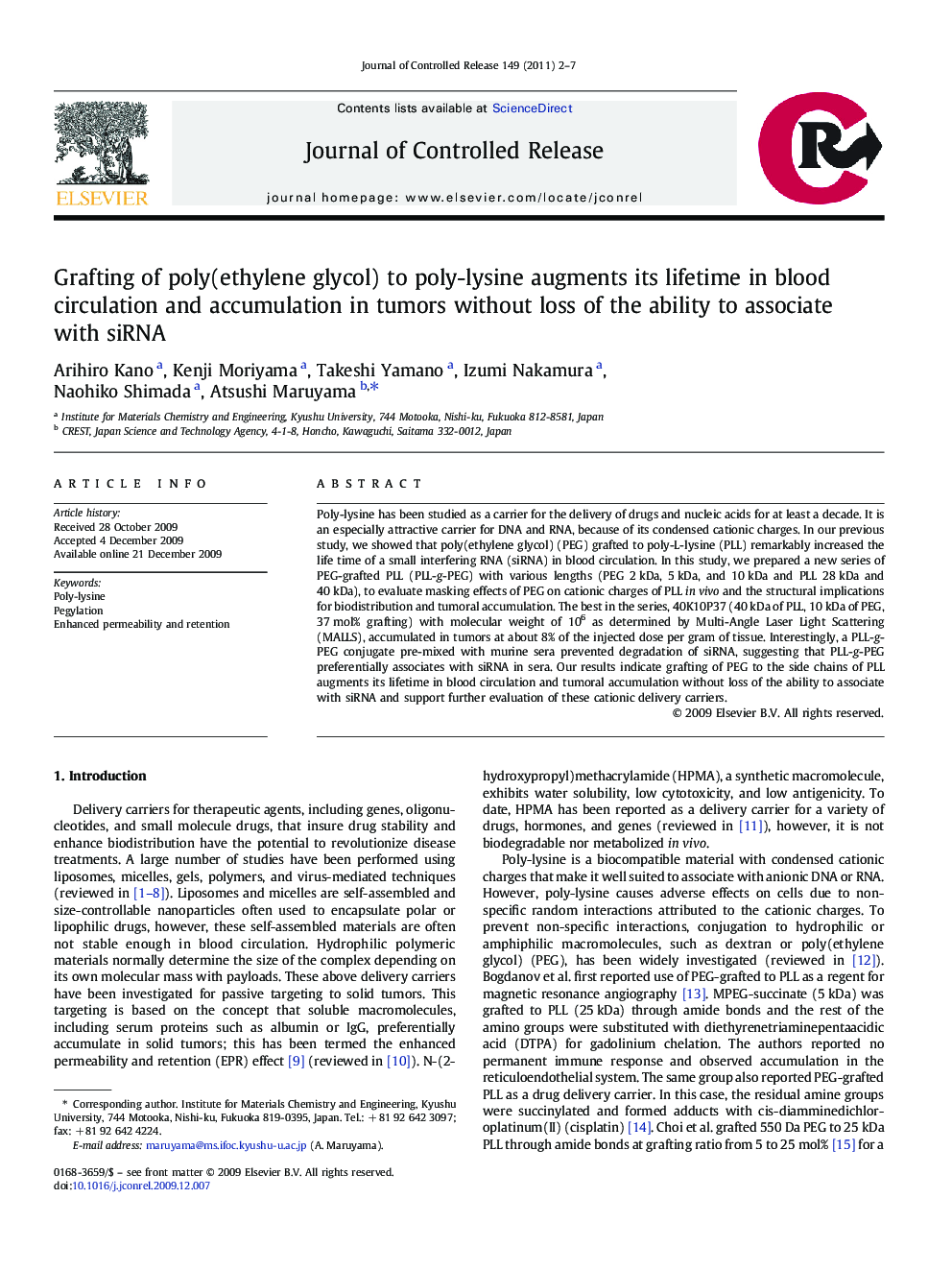| Article ID | Journal | Published Year | Pages | File Type |
|---|---|---|---|---|
| 1425488 | Journal of Controlled Release | 2011 | 6 Pages |
Poly-lysine has been studied as a carrier for the delivery of drugs and nucleic acids for at least a decade. It is an especially attractive carrier for DNA and RNA, because of its condensed cationic charges. In our previous study, we showed that poly(ethylene glycol) (PEG) grafted to poly-L-lysine (PLL) remarkably increased the life time of a small interfering RNA (siRNA) in blood circulation. In this study, we prepared a new series of PEG-grafted PLL (PLL-g-PEG) with various lengths (PEG 2 kDa, 5 kDa, and 10 kDa and PLL 28 kDa and 40 kDa), to evaluate masking effects of PEG on cationic charges of PLL in vivo and the structural implications for biodistribution and tumoral accumulation. The best in the series, 40K10P37 (40 kDa of PLL, 10 kDa of PEG, 37 mol% grafting) with molecular weight of 106 as determined by Multi-Angle Laser Light Scattering (MALLS), accumulated in tumors at about 8% of the injected dose per gram of tissue. Interestingly, a PLL-g-PEG conjugate pre-mixed with murine sera prevented degradation of siRNA, suggesting that PLL-g-PEG preferentially associates with siRNA in sera. Our results indicate grafting of PEG to the side chains of PLL augments its lifetime in blood circulation and tumoral accumulation without loss of the ability to associate with siRNA and support further evaluation of these cationic delivery carriers.
Graphical abstractFigure optionsDownload full-size imageDownload as PowerPoint slide
